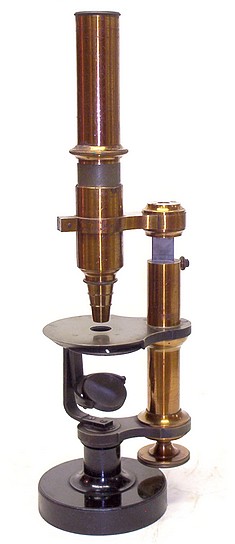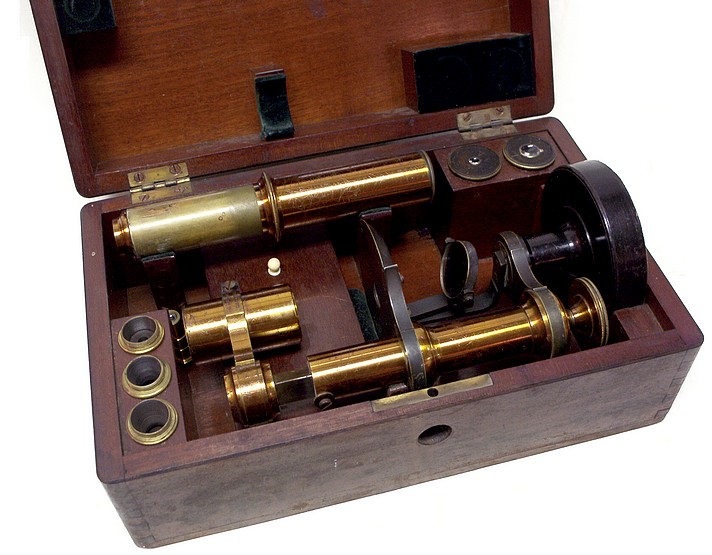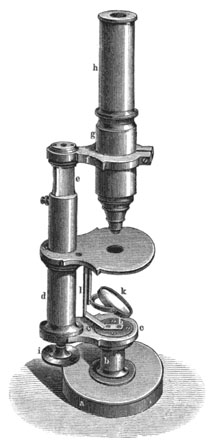



The microscope was found with three eyepieces numbered I, III, and V and four objectives; the number 1 is signed " B.L.", the numbers 3 and 7 are signed "Belthle & Leitz", and the number 4 is unsigned. In the 1866 price list, this model is referred to as the "Kleines Mikroskop". It is 12.25 inches tall as shown in the figure. The round iron base is painted black and is 3 and 3/8 inches in diameter. A short iron pillar rises from the base and engages a short oxidized brass arm that supports the main body of the microscope. This arm can freely rotate about the base so that the microscope is capable of full 360° rotation. The single sided concave mirror is attached to a arm with a swivel joint that allows lateral side to side movement of the mirror. The coarse adjustment is by push tube. The outer tube is sprung and contains an adjustment screw that allows the tension to be altered. The fine adjustment utilizes a micrometer screw located under the pillar. The round stage has an oxidized brass finish. There is no provision for stage clips. Inset under the stage is a wheel with five apertures.
In 1849, Carl Kellner founded what was named the Optical Institute in Wetzlar Germany. By 1851 he employed twelve workmen and was producing his first microscopes. Kellner's microscopes met with wide acclaim and were furnished with his noted invention, the orthoscopic eyepiece. Unfortunately, at only the age of twenty nine, Kellner succumbed to tuberculosis in 1855. The Optical Institute survived under the leadership of Friedrich Belthle, an apprentice of Kellner's, who married Kellner's widow shortly after his death. In 1863 Ernst Leitz joined the Institute. By 1865 he was a partner in the firm, and later became the sole proprietor after Belthle's death in 1869.
On the basis of the serial number, this microscope was made around 1866. As stated above, it was in the previous year that Ernst Leitz became a partner in the firm. From the signatures on the microscope and the objectives, it would seem that the microscope was made immediately before Leitz became a partner while the objectives were made after this event. It is therefore likely that this microscope, with its associated objectives, is one of the first articles of commerce bearing the Leitz name.
Magnification chart


